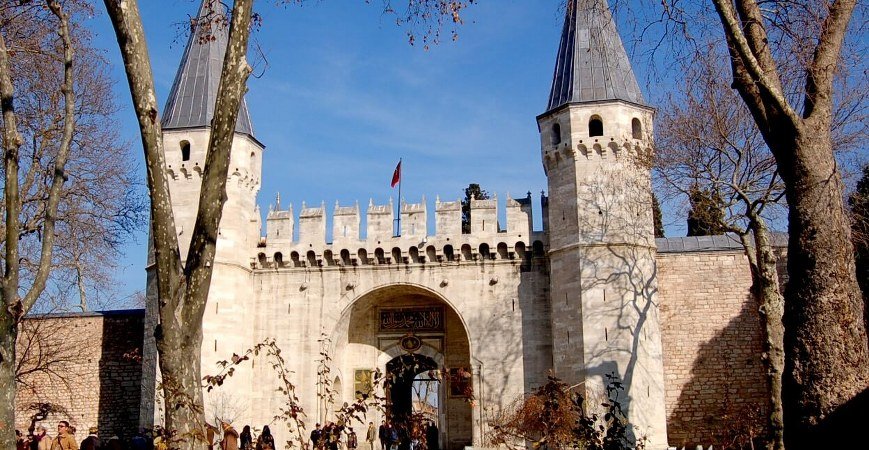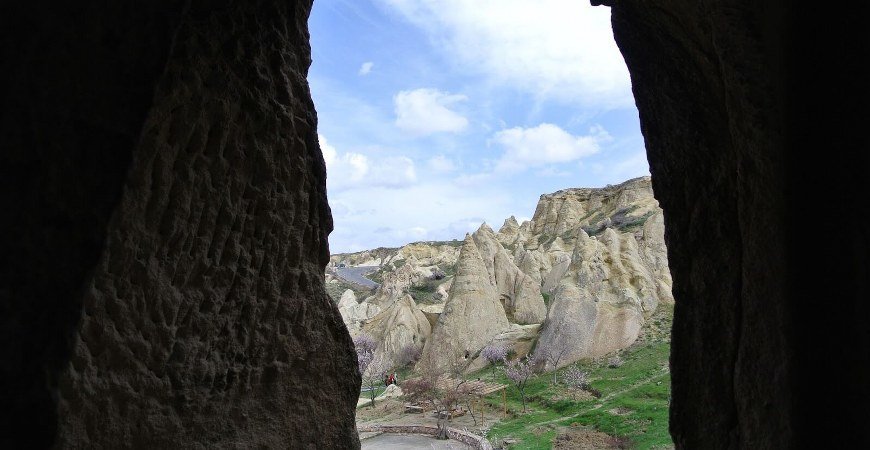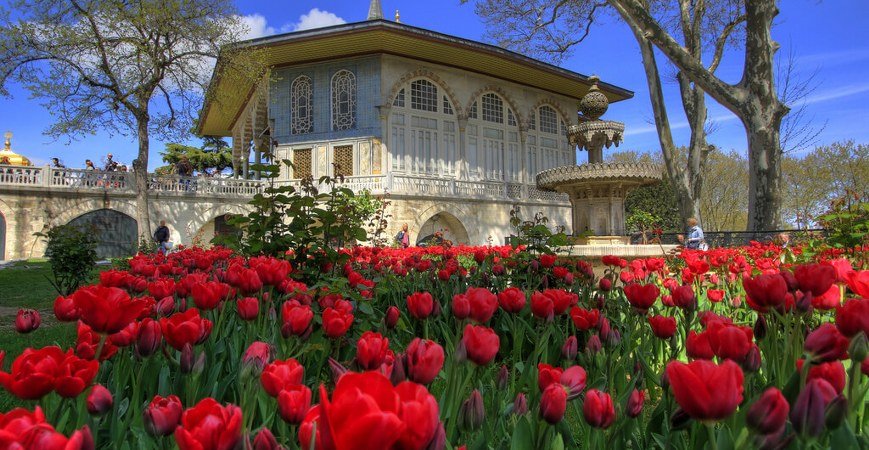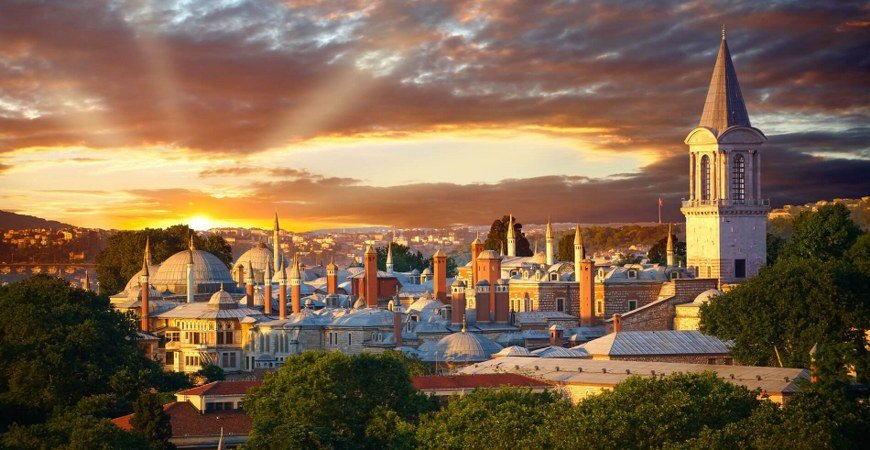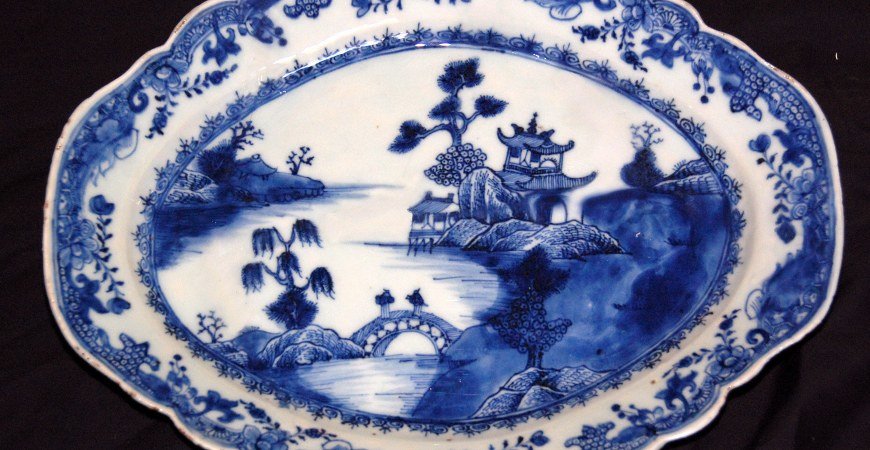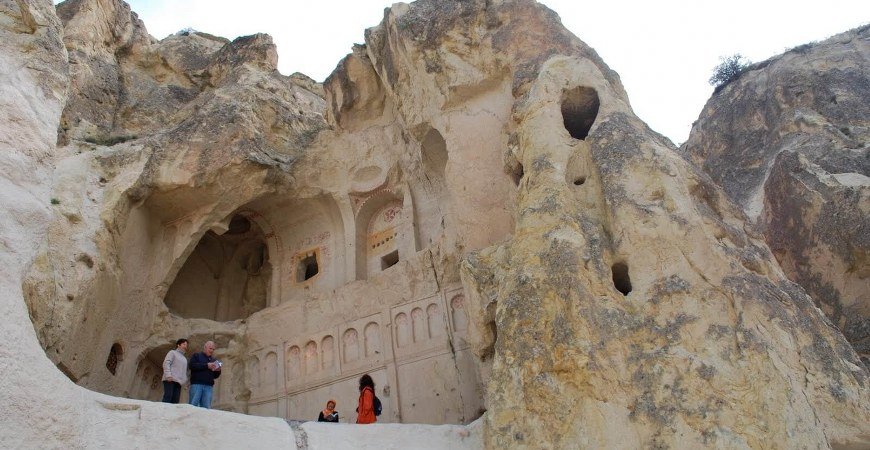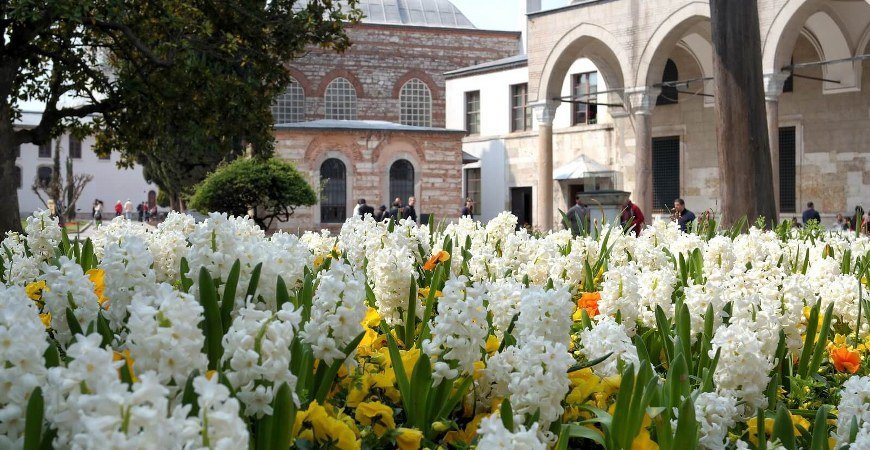Section Of Weapons of Topkapi Palace Museum Istanbul,
Going back through the Ward of the second court one encounters to the right the side of the old Divan building. This building, in which are kept collections of weapons, dates from the Conqueror and used to house the Inner Treasury and the Fiscal Treasury. It has seen many restorations. There are some ten thousand weapons of various sorts which have found their way into the Treasury, having belonged either to the sultans or to their retinue and of these six thousand are on display. This is one of the largest collections of Eastern weapons in existence. There is a complete series of Arabic words, each bearing its date, from Muaviye to the last Abbasid Caliphs, and another complete series of Egyptian Mameluk swords, from Baybars to Tomanbay and Kansongori. The Turk-ish swords, of which there is a great variety, ranging from the Conquerer to the last of the Sultans. There are also helmets, coats of armor, shields, maces, lances, javelins, guns and pistols, and a very rich and varied collection of Turkish bows and arrows. The excellence of the Turkish weapons played its role in the great Ottoman victories. At the same time, the delicate ornamentation on them gives them an appearance as harmless as that of any bibelot and reveals the talent for this art of the Turkish craftsmen. The Weapons Section contains separate collections of Persian, European, African and even Japanese weapons. SECTION OF TURKISH TILES (44) The Pen Room under the Dome has been added to from time to time, but it has been finally restored to its original form. A collection of Turkish tiles, which are the most magnificent in the world, is displayed here. Here it is possible to see the development and final decline of this art, from the continue. time of the Selcuk school (fifteenth century) through progressive excellence in the use of color and design to the fall of the curve, and finally to the tiles made for Tekfiir Saray in Istanbul. In addition to the Saray tiles, many other fine examples of this Turkish art are on display in the mosques and tombs in Istanbul and other parts of the country.
